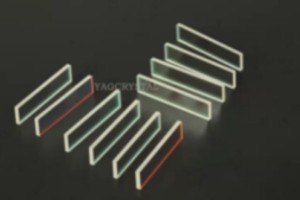Prism–Used To Split Or Disperse Light Beams.
Product Description
A prism is a polyhedron made of transparent materials (such as glass, crystal, etc.). It is widely used in optical instruments. Prisms can be divided into several types according to their properties and uses. For example, in spectroscopic instruments, the "dispersion prism" that decomposes composite light into spectra is more commonly used as an equilateral prism; in instruments such as periscopes and binocular telescopes, changing the direction of light to adjust its imaging position is called "full prism". "Reflecting prisms" generally use right-angle prisms.
The side of the prism: the plane on which light enters and exits is called the side.
The main section of the prism: the plane perpendicular to the side is called the main section. According to the shape of the main section, it can be divided into triangular prisms, right-angle prisms, and pentagonal prisms. The main section of the prism is a triangle. A prism has two refracting surfaces, the angle between them is called the apex, and the plane opposite the apex is the bottom.
According to the law of refraction, the ray passes through the prism and is deflected twice towards the bottom surface. The angle q between the outgoing ray and the incident ray is called the deflection angle. Its size is determined by the refractive index n of the prism medium and the incident angle i. When i is fixed, different wavelengths of light have different deflection angles. In visible light, the deflection angle is the largest for violet light, and the smallest is for red light.









